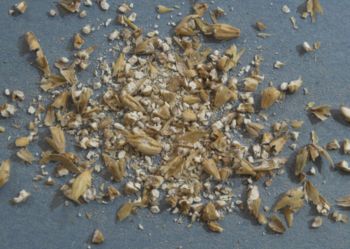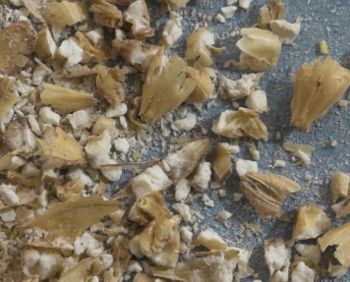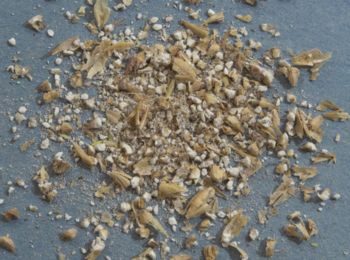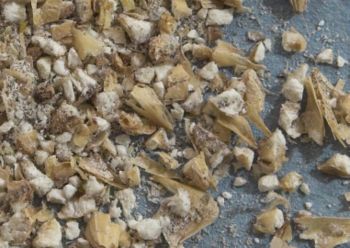work in progress
--Kaiser 22:00, 24 December 2007 (CST)
When brewing all grain, the quality of the crush has a major impact on the brew house efficiency as well as the lautering process. In extreme cases, a poor crush can also lead to astringent off flavors.
The ideal crush for malt exposes all the endosperm as flour and grits and leaves the husks intact. But in practice this is difficult to achieve. In order to expose as much of the endosperm as possible, the malt has to be crushed very tightly which leaves most of the husk material shredded. This can lead to stuck sparges astringent off-flavors. Conversely, when the malt is milled loosely the husks are preserved better but a considerable amount of the endosperm remains unexposed which will result in a loss off efficiency. Because of this the brewer needs to find a good compromise for setting the grain mill spacing.
The following pictures are intended to guide the brewer in evaluating the crushed grain:
This crush has been produced with a 2 roller mill (JSP Maltmill) at its factory setting of 36 mil / 0.92 mm. At this setting, which is fairly loose, no substantial husk shredding occurs while the endosperm is mostly ground into grits. Some of the endosperm is left behind in the husks. The low percentage of flour and well preserved husks will make for easy lautering. But even with well modified malts, the brewhouse efficiency will be average.
At a much tighter setting (19 mil / 0.48 mm), the same mill will produce considerably more flour and shredded husks. While the efficiency is significantly increased, the lauter may not run as easily and may even get stuck if the allowed run-off speed is to great. As long as the mash and lauter pH are well below 5.8, no significant tanning extraction should be expected even though more of the husks have been shredded. The increased brewhouse efficiency makes this the crush of choice for many brewers.




